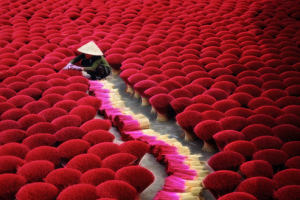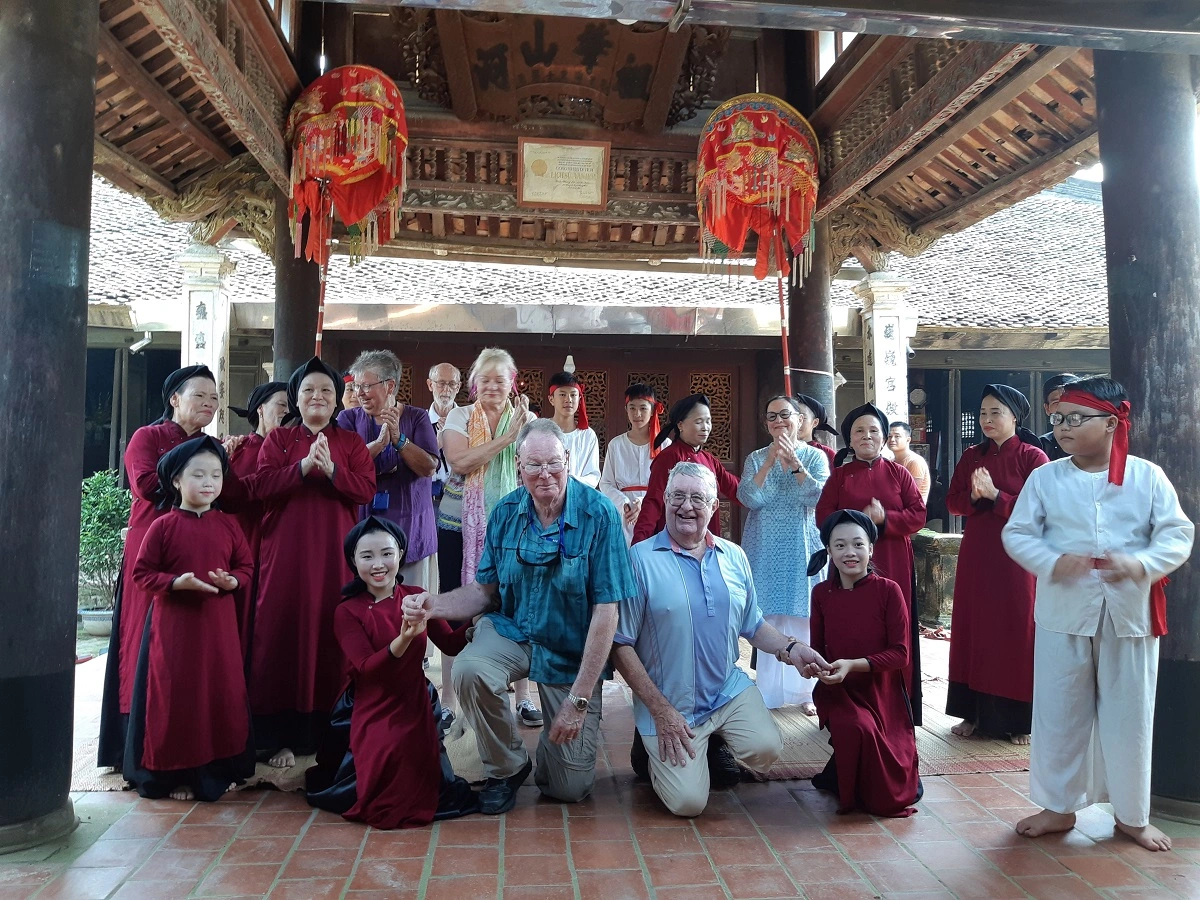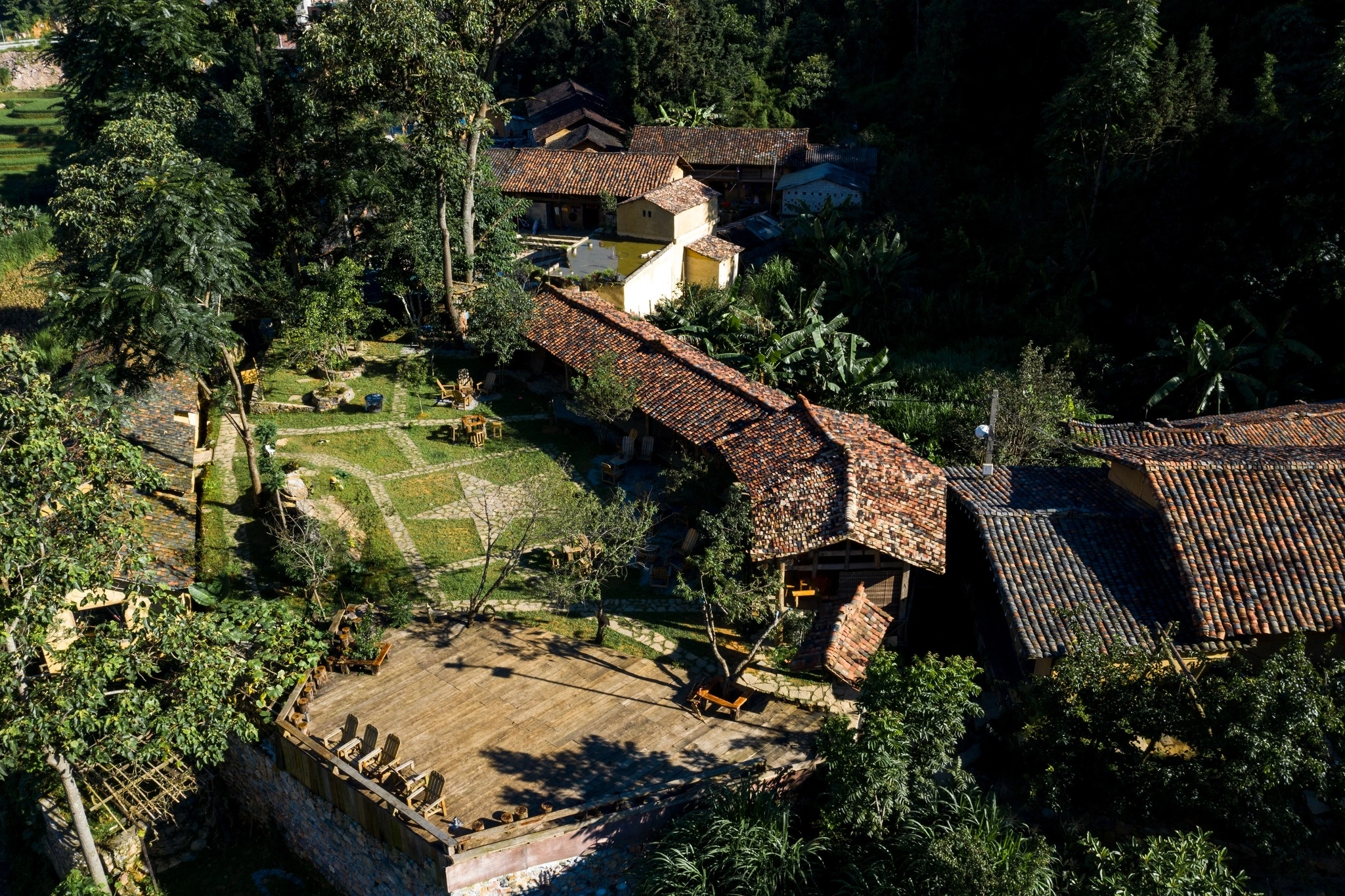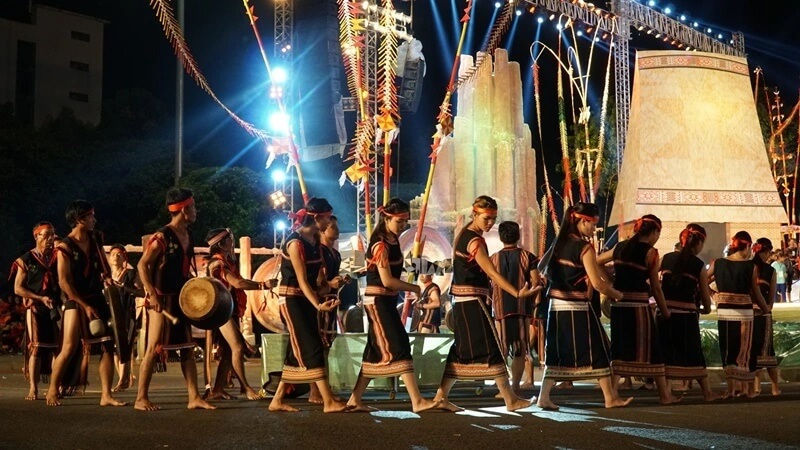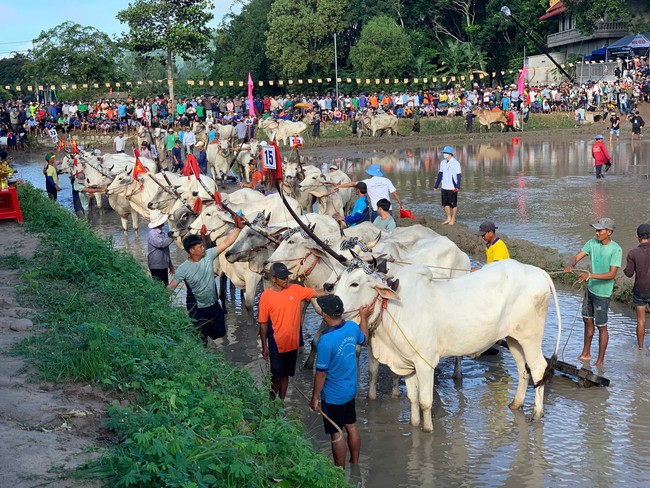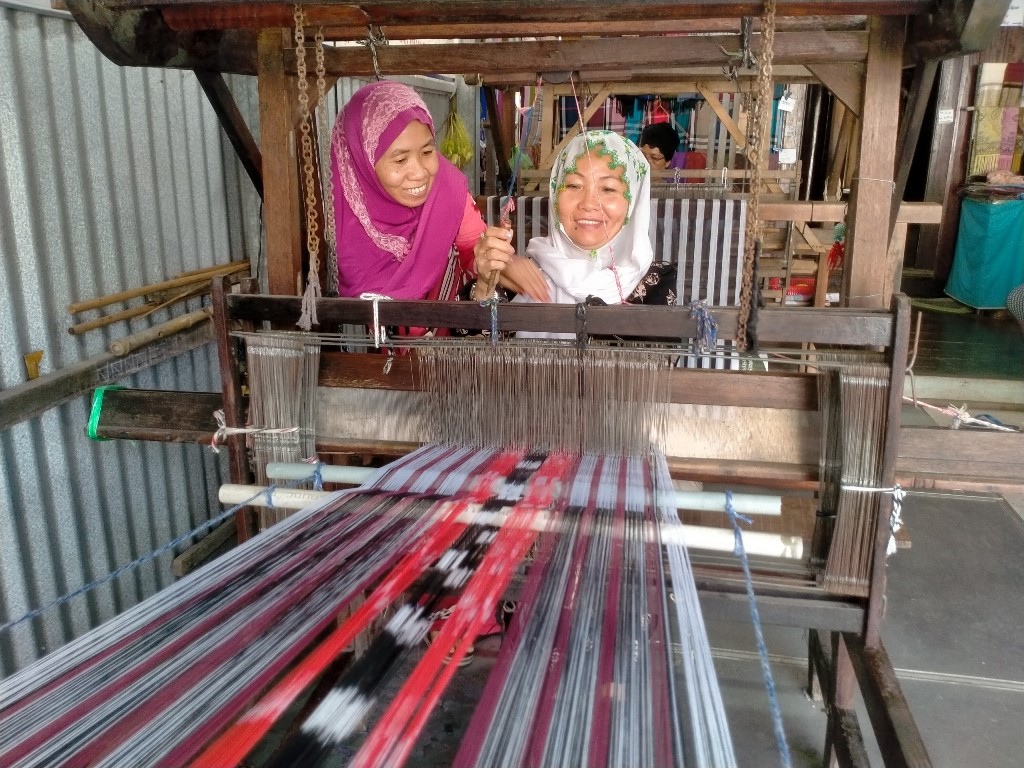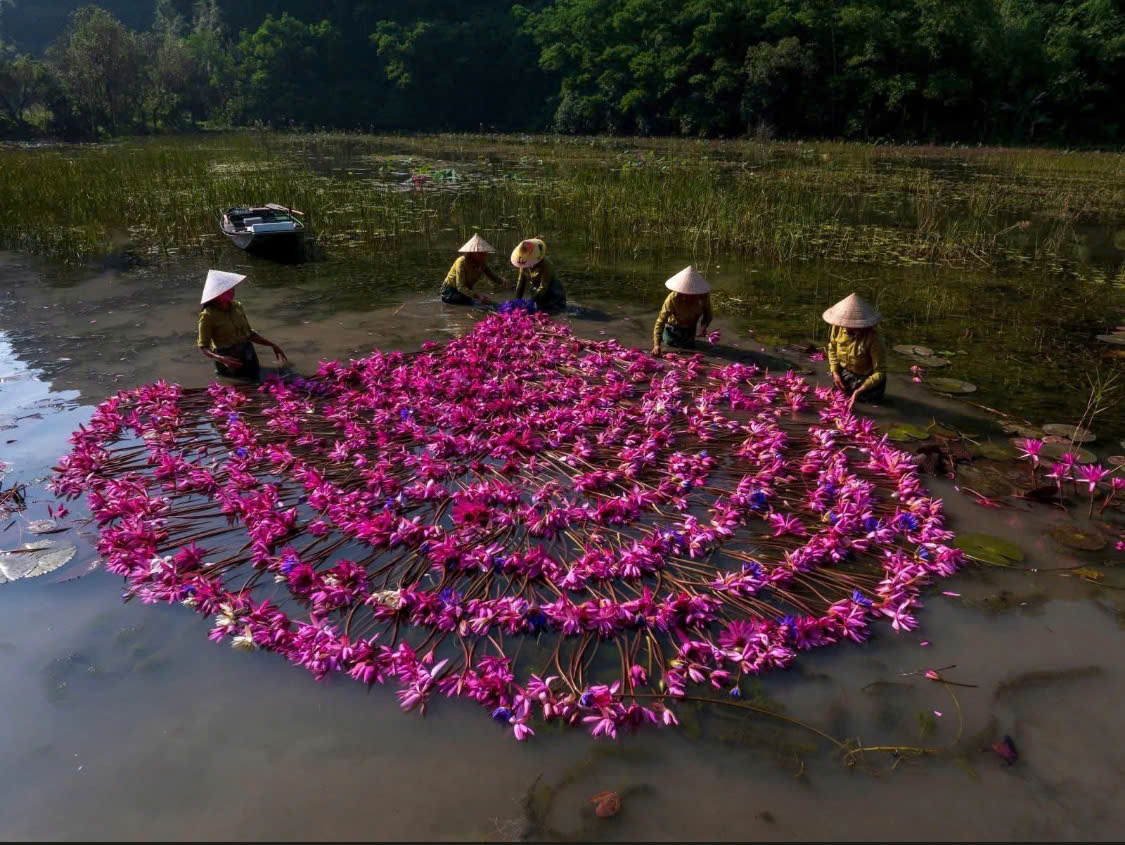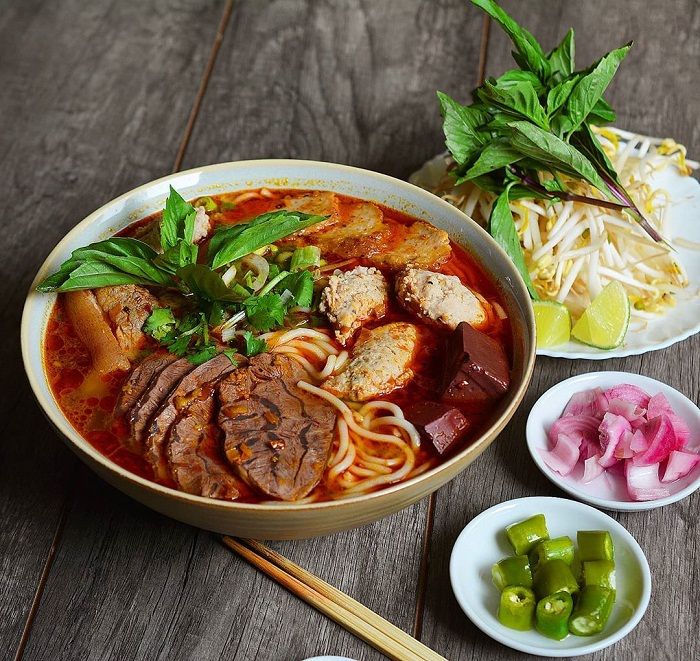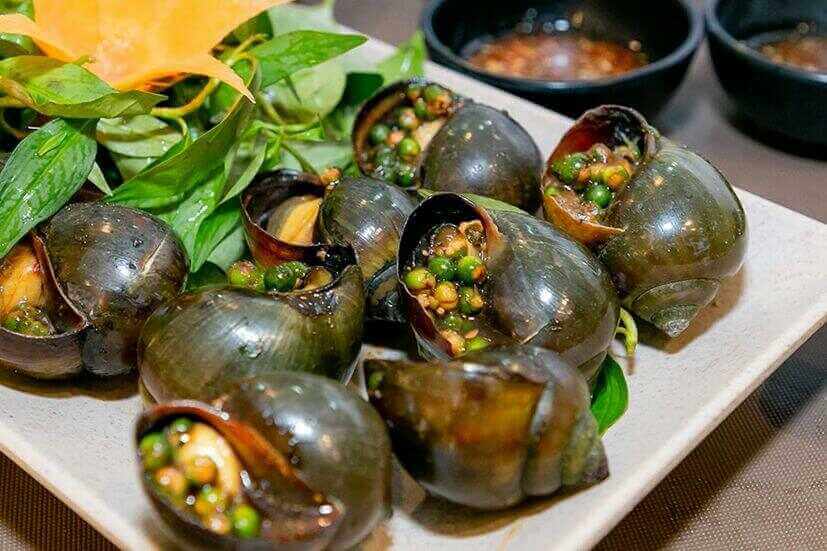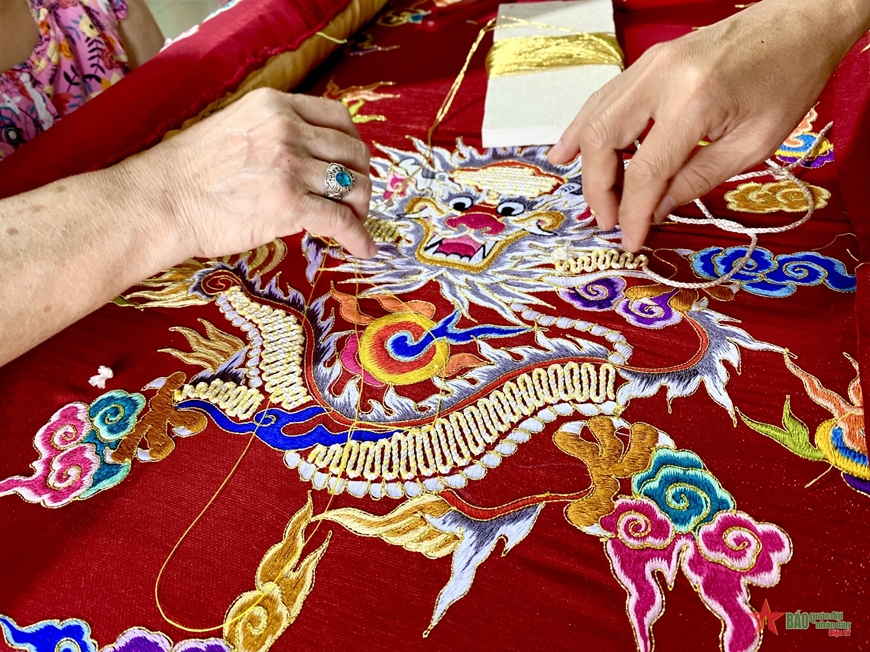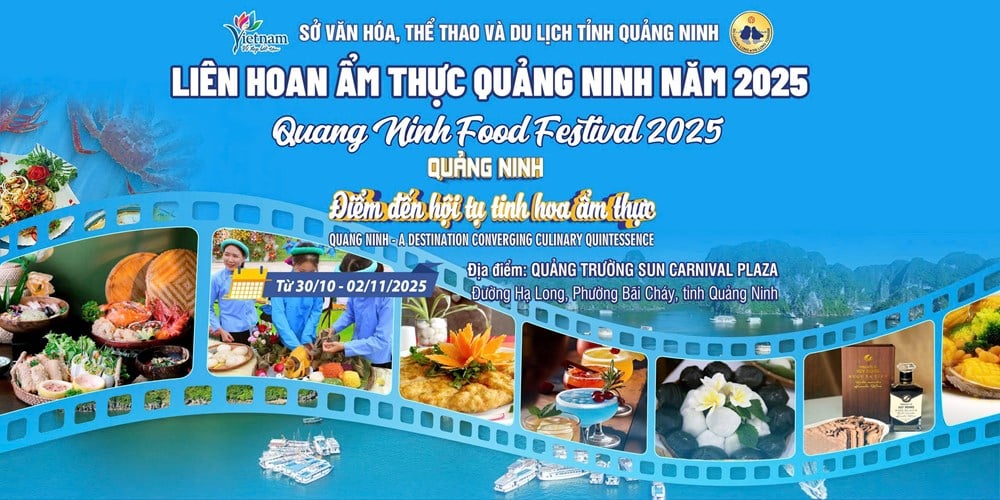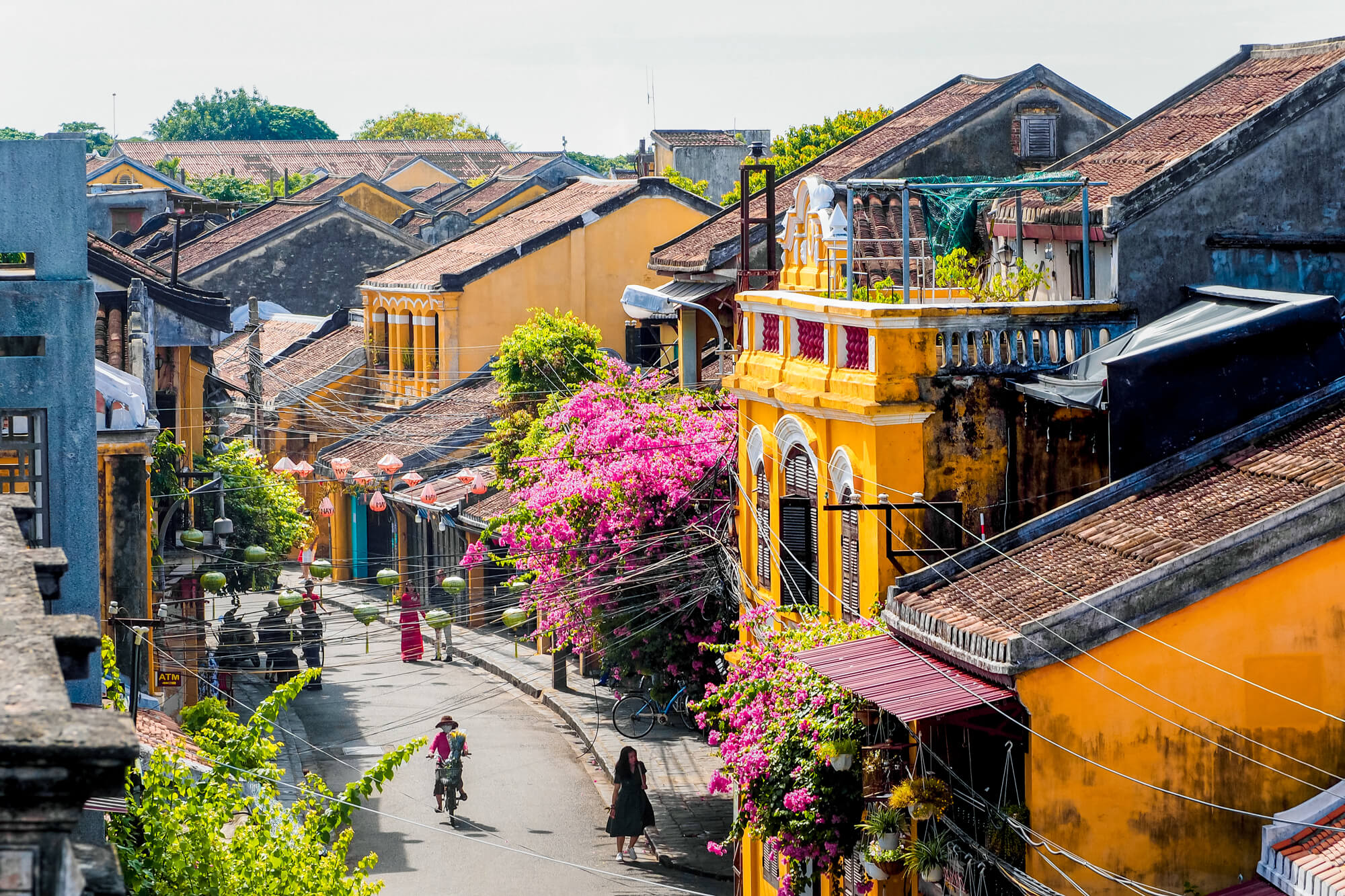Traditional Village In Vietnam (Part 2)
Traditional Villages In Vietnam
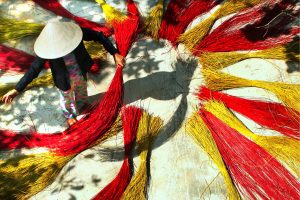
Nestled within the dynamic cultural landscape of Hanoi, Vietnam, are traditional villages that serve as living legacies to age-old customs and lifestyles. Scattered around the periphery of the bustling city, these villages provide a window into Vietnam’s deep-rooted heritage and enduring traditions.
Entering these traditional villages is akin to stepping back in time, where ancient rituals and artisanal skills continue to flourish. From the idyllic rice fields of Bat Trang, famed for its intricate pottery, to the serene atmosphere of Van Phuc, a charming silk village, each enclave narrates a distinctive tale of perseverance and conservation.
Within these villages, time appears to decelerate as visitors meander through narrow lanes flanked by ancient dwellings adorned with detailed woodwork and tiled rooftops. Here, locals uphold time-honored crafts like silk weaving, bamboo craftsmanship, and traditional cultivation techniques, imparting their expertise from one generation to the next.
The vibrant sense of community is tangible as villagers unite to observe festivals, pay homage to ancestors, and maintain cultural rites that have persisted for centuries. Amidst encroaching urbanization on the outskirts of Hanoi, these traditional villages stand as precious remnants of Vietnam‘s history, offering visitors a captivating insight into the nation’s rich cultural legacy.
We will continue to uncover the following traditional villages in this part 2!
Quang Phu Cau Incense Village
The quiet and time-honored Quang Phu Cau Village lies approximately 35 kilometers from the heart of Hanoi. Nestled within the commune of Quang Phu Cau in the Ung Hoa district, this village boasts a rich legacy in the crafting of traditional incense sticks. Revered for its vibrant cultural tapestry and hospitable locals, Quang Phu Cau incense village offers visitors a truly authentic and unique experience. While poised to garner attention as a burgeoning tourist hotspot, it remains a hidden gem off the conventional tourist trail, often overlooked by those exploring Hanoi.
Local tradition holds that incense is crafted from herbal ingredients, its longevity and beauty attributed to meticulous mixing and care in each step of the process. Spread across expansive areas like house yards, community centers, and vacant lots, the drying process of incense creates a mesmerizing spectacle for visitors. Along village roads and within neighborhoods, vibrant images of colorful incense sticks adorn the landscape. This time-honored profession, passed down through generations in Quang Phu Cau, not only preserves cultural heritage but also provides livelihoods for the local community, sustaining a tradition that thrives amidst modernity.
Phung Xa Lotus Silk Village – Artisan Phan Thi Nhuan
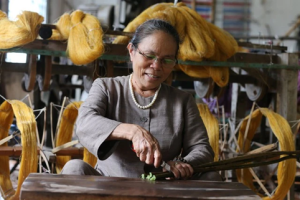
In Phung Xa village, located in My Duc district, Hanoi, a remarkable transformation has taken place. Lotus stems, once even be discarded by locals, have become the cornerstone of a burgeoning profession, offering newfound income and fulfilling a desire shared by many women. Spearheading this innovative endeavor is artisan Phan Thi Thuan, credited as the pioneer in weaving fabric from lotus stems. Raised in Phung Xa amidst a lineage of weavers spanning four generations, Thuan’s childhood was steeped in the traditions of mulberry picking, silkworm rearing, and the art of weaving. From a young age, she grew accustomed to the challenges inherent in fabric production. Reflecting on her experiences, Thuan remarked that nurturing silkworms proved more demanding than tending to a child. “Without passion and patience,” she emphasized, “one cannot endure this craft.”
The intricate patterns adorning lotus silk scarves are meticulously crafted in the traditional weaving village of Phung Xa. This unique silk is unlike any other, with threads delicately extracted from the stems of lotus leaves, then painstakingly spun and woven into luxurious fabric. Each scarf is not just a piece of clothing but a symbol of craftsmanship and innovation, embodying the rich cultural heritage of Vietnam while offering a glimpse into the future of sustainable fashion. In Phung Xa, the lotus, once overlooked, now symbolizes hope, prosperity, and the limitless potential of human ingenuity. Visitors flock to witness firsthand the fascinating process of creating the world’s most exquisite and expensive silk right here in Vietnam.
Phuc Am Village
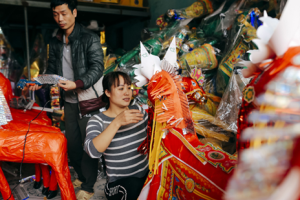
Phuc Am village, nestled in Duyen Thai commune within Hanoi’s Thuong Tin district, has long held the prestigious title of being the foremost “capital” of votive paper production in the city. Specializing in crafting effigies ranging from horses and elephants to dragon boats, houses, and cars, Phuc Am caters primarily to patrons seeking offerings for temples, palaces, and shrines. The art of making votive papers demands both skill and meticulous attention to detail, with every stage—from drawing and cutting to glueing and framing—being meticulously executed by hand.
As Tet, the Vietnamese Lunar New Year, approaches, the streets and alleys of Phuc Am village bustle with frenetic activity as artisans labor tirelessly to meet the heightened demand for votive papers. Here, amidst the vibrant atmosphere, the entire community comes together to prepare for the annual tradition of honoring and bidding farewell to Mr. Cong and Mr. Tao, deities believed to return to heaven during this auspicious time. Through centuries-old craftsmanship and unwavering dedication, Phuc Am village continues to uphold its reputation as the preeminent hub of votive paper production, ensuring that cultural traditions endure and thrive with each passing generation.
To conclude
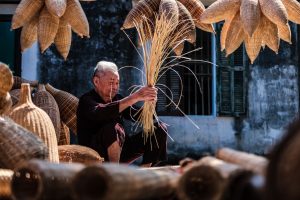
The traditional villages surrounding Hanoi stand as living testaments to Vietnam‘s rich cultural heritage and artisanal traditions. From the pottery workshops of Bat Trang to the silk weaving looms of Van Phuc, these villages offer visitors a captivating journey back in time. As one wanders through the narrow lanes and tranquil landscapes, they are immersed in the sights, sounds, and scents of centuries-old craftsmanship. Whether it’s witnessing artisans at work, exploring vibrant markets, or simply soaking in the serene ambiance, a visit to these traditional villages is sure to leave a lasting impression, fostering a deeper appreciation for the cultural richness of Hanoi and its surrounding regions.



